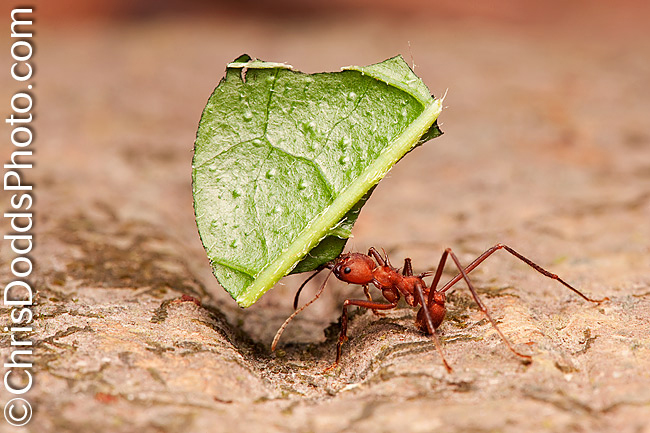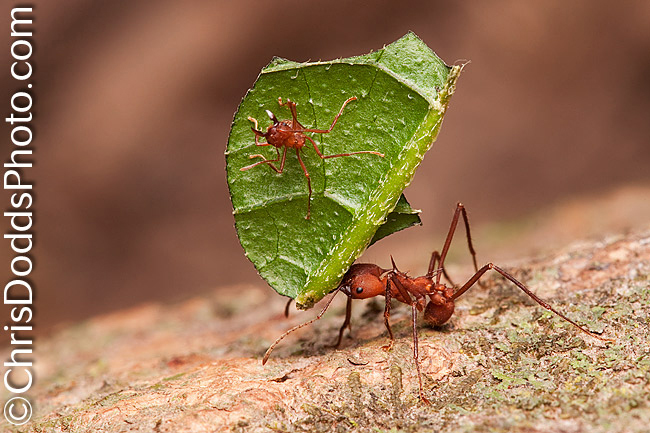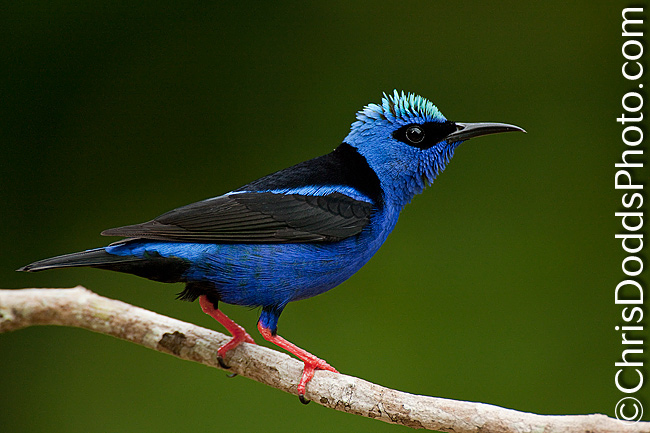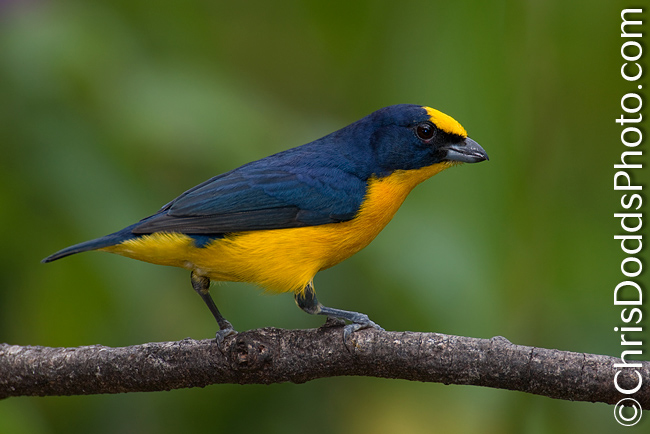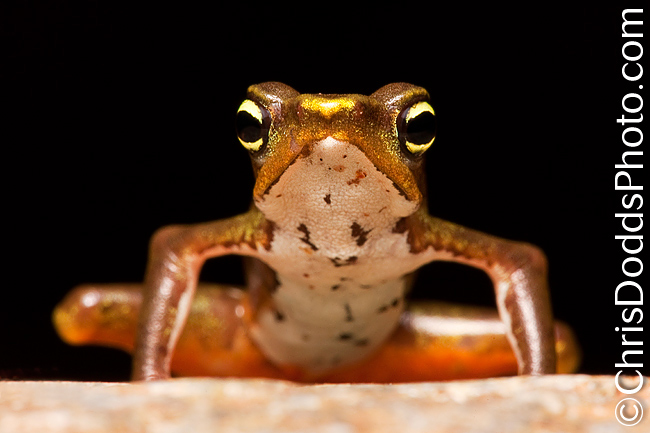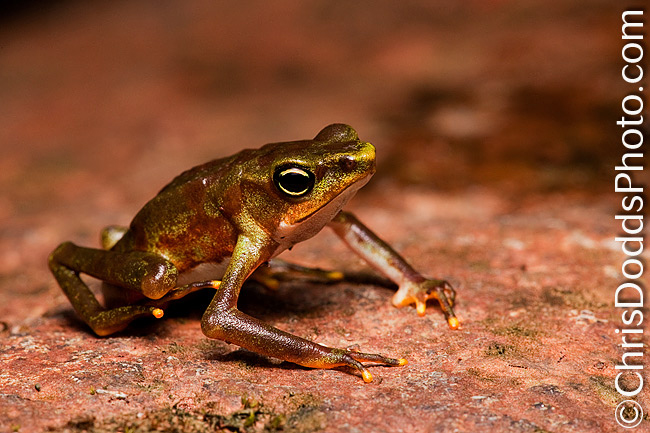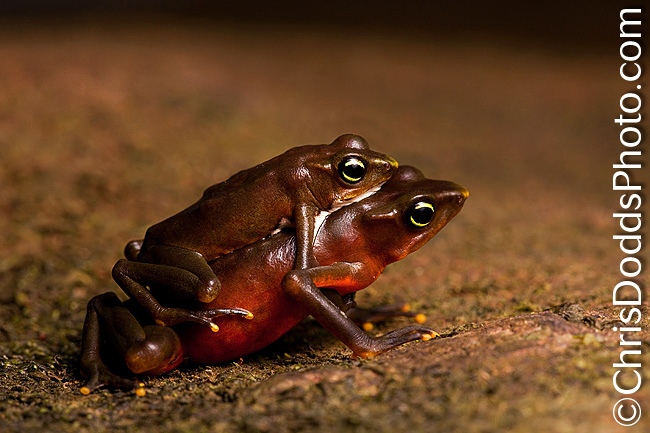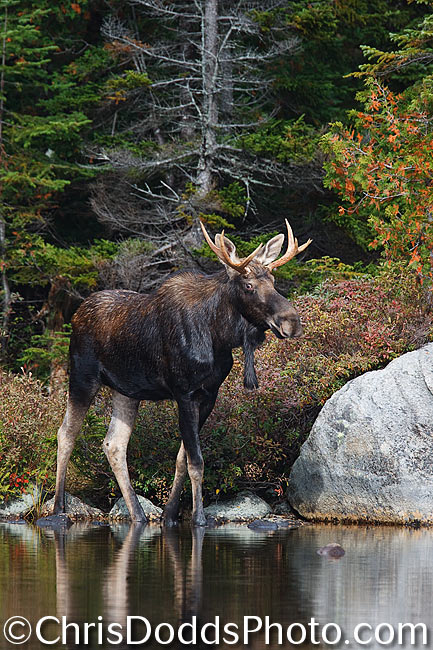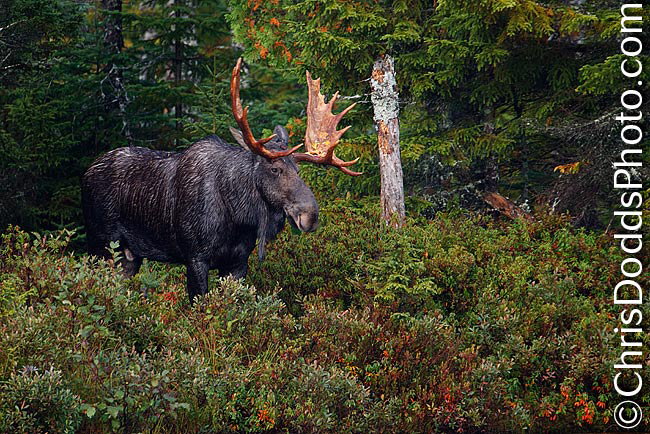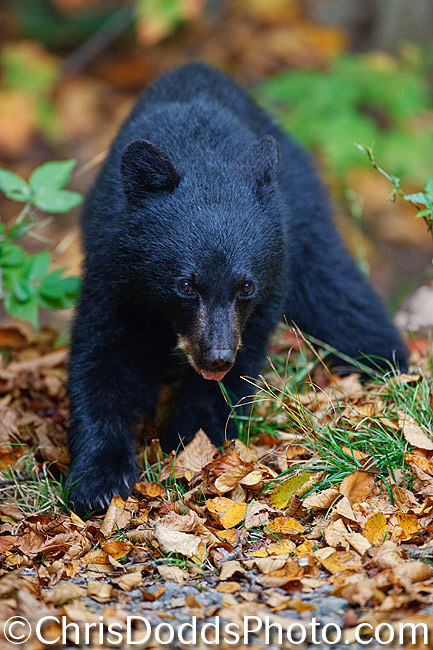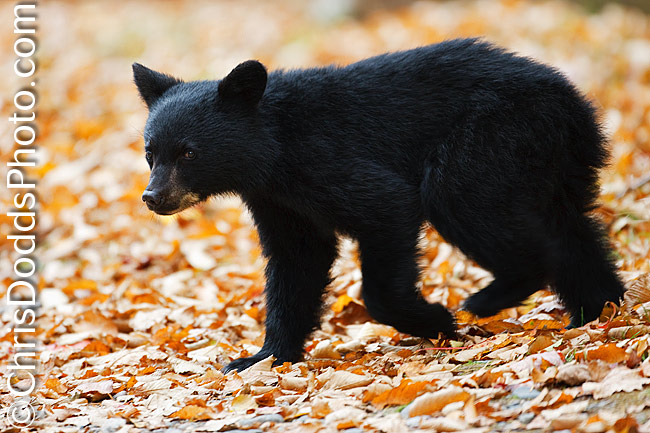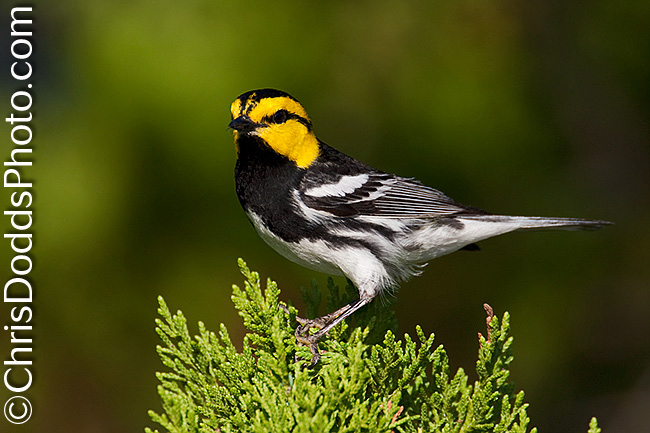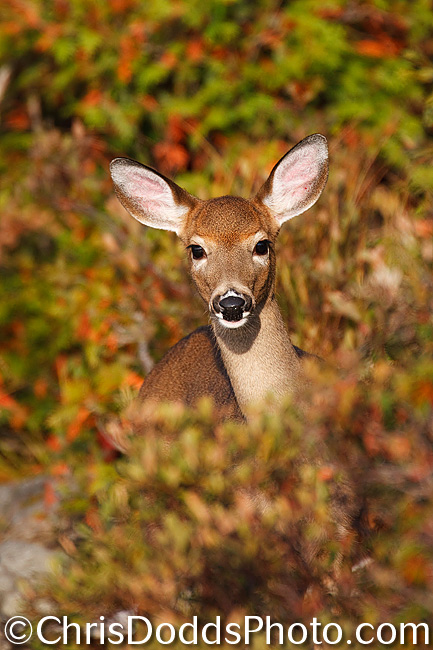 Eastern White-tailed Deer Fawn Portrait (Odocoileus virginianus, Cerf de Virginie) Sandy Stream Pond (Roaring Brook Campground), Baxter State Park, Maine, USA ©Christopher Dodds www.chrisdoddsphoto.com Canon EOS 1Ds Mark III, 500mm F4, 2X II Tele-converter Gitzo 1325 Tripod and Wimberley Head II. ISO 400, F8 1/500s Manual mode.
Eastern White-tailed Deer Fawn Portrait (Odocoileus virginianus, Cerf de Virginie) Sandy Stream Pond (Roaring Brook Campground), Baxter State Park, Maine, USA ©Christopher Dodds www.chrisdoddsphoto.com Canon EOS 1Ds Mark III, 500mm F4, 2X II Tele-converter Gitzo 1325 Tripod and Wimberley Head II. ISO 400, F8 1/500s Manual mode.
This years trip to Baxter State Park in Maine was, without doubt, my most productive. We had a great time photographing two Black Bear Cubs, an Eastern White-tailed Deer doe and her twin fawns, Common Goldeneyes, Common Mergansers, amazing fall foliage and did I mention the 13 Moose? I thought I would make my first post about the Eastern White-tailed Deer that live in the park, but until this visit I had never seen there. Shortly after setting-up for Moose one afternoon, we watched as a doe brought her twin fawns out to the water's edge across the lake from us. She slowly made her way around the lake until they were about forty feet from us.
 White-tailed Deer Doe & twin fawns at Sandy Stream Pond (Odocoileus virginianus, Cerf de Virginie) Sandy Stream Pond (Roaring Brook Campground), Baxter State Park, Maine, USA ©Christopher Dodds www.chrisdoddsphoto.com Canon EOS 5D Mark II, 24-70mm F2.8 @ 70mm, ISO 400, F14 1/200s Manual mode.
White-tailed Deer Doe & twin fawns at Sandy Stream Pond (Odocoileus virginianus, Cerf de Virginie) Sandy Stream Pond (Roaring Brook Campground), Baxter State Park, Maine, USA ©Christopher Dodds www.chrisdoddsphoto.com Canon EOS 5D Mark II, 24-70mm F2.8 @ 70mm, ISO 400, F14 1/200s Manual mode.
White-tailed Deer facts
Our only animals with antlers, North America's deer include three giants; Moose, caribou , and wapiti, or elk. The most widespread and abundant members of the family, however, are the alert, elegant bucks, graceful does, and dappled fawns of the white-tailed and mule deer.
Especially common throughout the East, the delicate white-tailed, or Virginia, deer prefers woodland edges but can also be found in many suburban areas. Up to 3 1/2 feet tall and weighing as much as 250 pounds, it is a fast, elusive creature that, when frightened, flashes the white underside of its tail like a banner. White-tailed deer can run at speed up to 36 mph (58 km/h), it can make vertical leaps of 8.5 feet (2.6m) and horizontal leaps of 30 feet (9m). The stockier, long-eared mule deer lives in the west on forested mountain slopes and deserts. The black-tailed deer of the North-West is a subspecies of the mule deer.
Both white-tails and mule deer browse by day and on moonlit nights on the buds and twigs of trees, feeding on tender grass, berries, and acorns when they are available. During hard winters they barely subsist on the meager food that is available, and starvation is common.
Male deer, or "bucks", are easily recognizable in the summer and fall by their prominent set of antlers, which bear a number of tines, or sharp points. In the fall, the antlered males battle other bucks for mates. About seven months later, first-time mothers generally give birth to a single fawn, while older does commonly bear twins. The young have spotted coats that provide much needed camouflage when they crouch motionless on the forest floor or in tall grass. And they are scentless, which further protects them from predators.
Kudos
from multiple workshop participant Eleanor Kee Wellman (thanks, Eleanor):
Since I first met Chris he has been telling me I should go with him and photograph the Northern Gannets on Bonaventure Island. He knows I love to capture behavior and there, you are surrounded by the many behaviors of the gannets as they go about their daily lives.
Chris is super organized and extremely well prepared! He knows what lenses and flash combinations are needed to maximize your opportunities. He genuinely wants his participants to go home with the best and most varied images possible. His early morning zodiac trips aren’t available through anyone else.
Lots of people, me included, dislike bad weather but Chris relishes it! The more dramatic the better for photography! Gannets in rain, fog, drizzle and sun, too. Eagles at Homer in the rain! Snowy Owls in white snowy haze! Hey, there’s going to be a big snowstorm! Why don’t you leave now and meet us for some great photo ops! He is ever enthusiastic and helpful.
He inspires everyone to do their best and he knows the greatest places to eat, too!
Thanks, Chris!!!!!
Eleanor Kee Wellman - Balla, Ontario (www.eleanorkeewellman.com)
